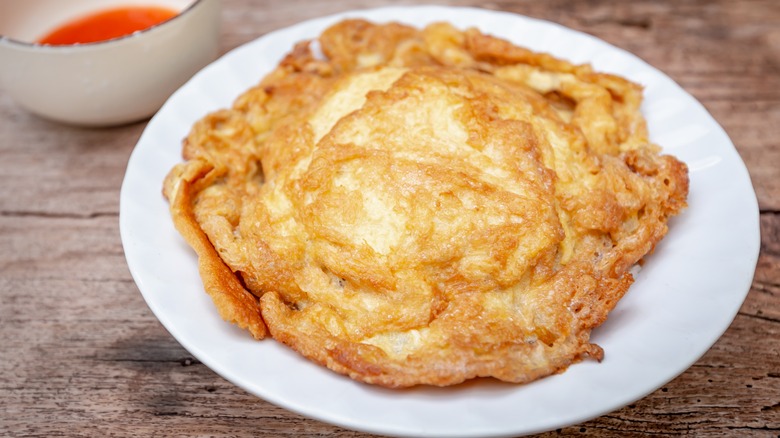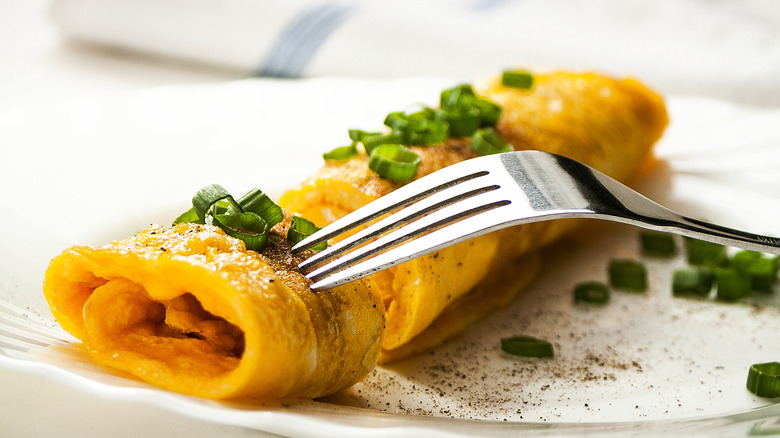Go With A Nonstick Pan When Making Thai Omelets
A Thai omelet, known as Kai Jeow, is traditionally made in a hot wok with a hefty glug of oil to achieve golden, crispy edges and a puffy center. If you don't have a wok to make this simple, speedy lunch, go with the reliable nonstick pan you use to make basics, like fried eggs and French toast. A nonstick skillet garners similar results to a hot wok and means you won't miss out on enjoying this delectable Thai meal that's perfect for serving at any time of day.
A common street food in Thailand, Kai Jeow is suitable for preparing in a nonstick pan because the special coating on the surface reduces the risk of the omelet mixture catching the base and leaving a lingering eggy smell in your kitchen. Nonstick pans also allow you to use less cooking oil to coat the bottom than you'd ordinarily need in a wok.
Thai omelets aren't rolled or folded over, like French or American-style omelets, and are flipped in the pan in the same way as a crepe or pancake. Because a good nonstick pan ensures the base of a Thai omelet stays loose and doesn't adhere to the base, it makes it easier to flip it in a single motion. Furthermore, an omelet that slides off the pan in one piece and hasn't broken into bits because it's partially stuck to the bottom simply looks more appetizing. Finally, nonstick pans prevent crusty residues from sticking, making cleanup much easier.
How do Thai omelets differ from French and American omelets?
Thai omelets are puffed up in the middle and have crispy edges because they're fried on high heat with plenty of oil. They also have a meaty flavor because umami-tasting fish sauce is incorporated into the eggs, which are beaten until well frothy to encourage a fluffier center. Traditionally eaten plain, fillings like scallions, ground beef, and pork are occasionally added too.
In contrast, a French omelet has a soft texture, extremely tender center, and smooth yellow exterior because it's cooked over low to moderate heat in flavorful butter. Folded over into a cylindrical shape, with the seam against the plate, a French omelet has a curved top and an almost custardy interior. They're often served simply, but fillings like chopped herbs and cheese can be included before they're rolled over in the pan. American omelets are similar to Thai omelets in that they have a deeper, golden crust. However, they have a firmer, thicker texture because they're left to fully set in the pan and often contain fillings like cheese, ham, and herbs.

